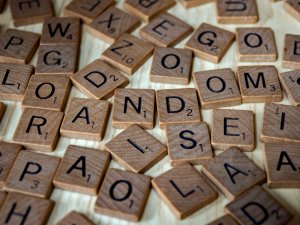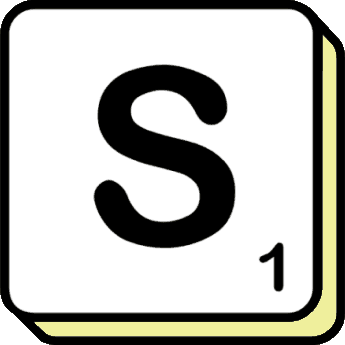Word Formation: Unlocking the Creative Processes Behind New Words
Author: Brian Bowman
Date Published: 5 September 2023
Language is a dynamic system that constantly evolves to meet the needs of its users. Word formation is a fascinating aspect of this evolution, as it encompasses the processes by which new words are created. In this comprehensive blog article, we will explore the intricacies of word formation, including derivations, affixes, and compounding. Join us as we unravel the creative mechanisms behind expanding our vocabulary and enriching our linguistic expression.

Derivation
Derivation is the process of creating new words by adding prefixes or suffixes to existing words. This method expands the vocabulary by modifying the original word's meaning or part of speech. Some common examples include
Adding the prefix "un-" to "happy" to form "unhappy."
Adding the suffix "-er" to "teach" to form "teacher."
Derivation allows for nuanced expression, enabling the creation of adjectives, nouns, verbs, and adverbs based on existing roots.
Affixation
Affixation is a subset of derivation and involves attaching affixes (prefixes, suffixes, or infixes) to a root word. Affixes alter the meaning or grammatical function of the base word. Examples include
Adding the prefix "re-" to "write" to form "rewrite."
Adding the suffix "-ness" to "kind" to form "kindness."
Affixation provides a flexible way to create new words and adjust their meaning or grammatical role within a sentence.
Compounding
Compounding is the process of combining two or more words to form a new word with a distinct meaning. Compound words can be formed through
Noun + Noun "Rainbow" (rain + bow)
Adjective + Noun "Blackbird" (black + bird)
Noun + Verb "Sunrise" (sun + rise)
Compounding allows for the creation of unique and efficient lexical units, promoting concise communication and semantic expansion.
Borrowing
Borrowing involves adopting words from other languages into our own. This process often occurs to fill lexical gaps or express concepts that have no direct equivalent. English, for example, has borrowed words from Latin (e.g., "verbatim"), French (e.g., "cuisine"), and German (e.g., "kindergarten").
Borrowing not only enriches vocabulary but also reflects cultural exchanges and historical influences.
Blending
Blending combines parts of two or more words to create a new word. This process typically involves truncating or overlapping the original words. Examples include
"Brunch" (breakfast + lunch)
"Smokestorm" (smoke + storm)
Blending offers a creative way to coin words that convey a combined meaning or describe emerging phenomena.
Acronyms and Initialisms
Acronyms are formed by taking the initial letters of a sequence of words and creating a new word pronounced as a single unit (e.g., "NASA" for National Aeronautics and Space Administration). Initialisms, on the other hand, are formed by using the initial letters but pronounced as separate letters (e.g., "BBC" for British Broadcasting Corporation).
Acronyms and initialisms streamline communication and facilitate easy reference to organizations, concepts, or technical terms.
Onomatopoeia
Onomatopoeia involves the formation of words that imitate or suggest the sounds they represent. Examples include words like "buzz," "hiss," and "murmur." Onomatopoeic words allow for vivid and expressive language, connecting sounds with their linguistic counterparts.
Back-Formation
Back-formation involves creating a new word by removing part of an existing word, often mistakenly assuming that the removed portion was a true affix. This process typically occurs when speakers reinterpret a word as a compound or misanalyze its structure. An example of back-formation is the creation of the verb "edit" from the noun "editor."
Back-formation highlights the creativity of language users in adapting and reshaping words to fit new linguistic patterns or perceived patterns.
Conversion
Conversion, also known as zero-derivation, occurs when a word changes its grammatical category without adding any affixes. For instance, the noun "email" can also function as a verb, as in "I will email you later." Conversion is a productive process that allows for efficient word creation by reassigning existing words to new grammatical functions.
Conversion exemplifies the flexibility of language and its capacity to repurpose words for different linguistic roles.
Reduplication
Reduplication involves repeating either a whole word or part of it to create a new word. This process can be found in various languages and serves different purposes, such as expressing plurality, intensity, or repetition. Examples include "bye-bye," "ping-pong," and "tick-tock."
Reduplication adds rhythm, emphasis, and playfulness to language, enhancing its expressiveness and allowing for semantic nuances.
Coinage
Coinage, also known as creation ex nihilo, refers to the process of inventing entirely new words without relying on existing linguistic elements. This can occur through blending sounds, combining letters, or using unconventional word forms. For example, the word "Google" was coined to name the popular search engine.
Coinage demonstrates the boundless creativity of language users and their ability to shape and expand vocabulary to adapt to changing contexts and novel concepts.
Neologisms
Neologisms are newly coined words or expressions that enter the lexicon to describe emerging concepts, technologies, or cultural phenomena. They often arise in response to societal shifts or advancements. Examples of neologisms include "selfie," "vape," and "podcast."
Neologisms reflect the ever-changing nature of language and its ability to adapt and incorporate innovative terms to meet the demands of evolving societies.
Conclusion
Word formation encompasses a rich array of processes that contribute to the growth and evolution of language. Through derivations, affixation, compounding, borrowing, blending, acronyms, onomatopoeia, back-formation, conversion, reduplication, coinage, and neologisms, we witness the remarkable creativity and adaptability of human language. The inventive mechanisms of word formation continually shape and expand our linguistic resources, allowing us to express ourselves with precision, creativity, and cultural relevance. So embrace the dynamism of language, explore its diverse formations, and immerse yourself in the ever-expanding world of words.
